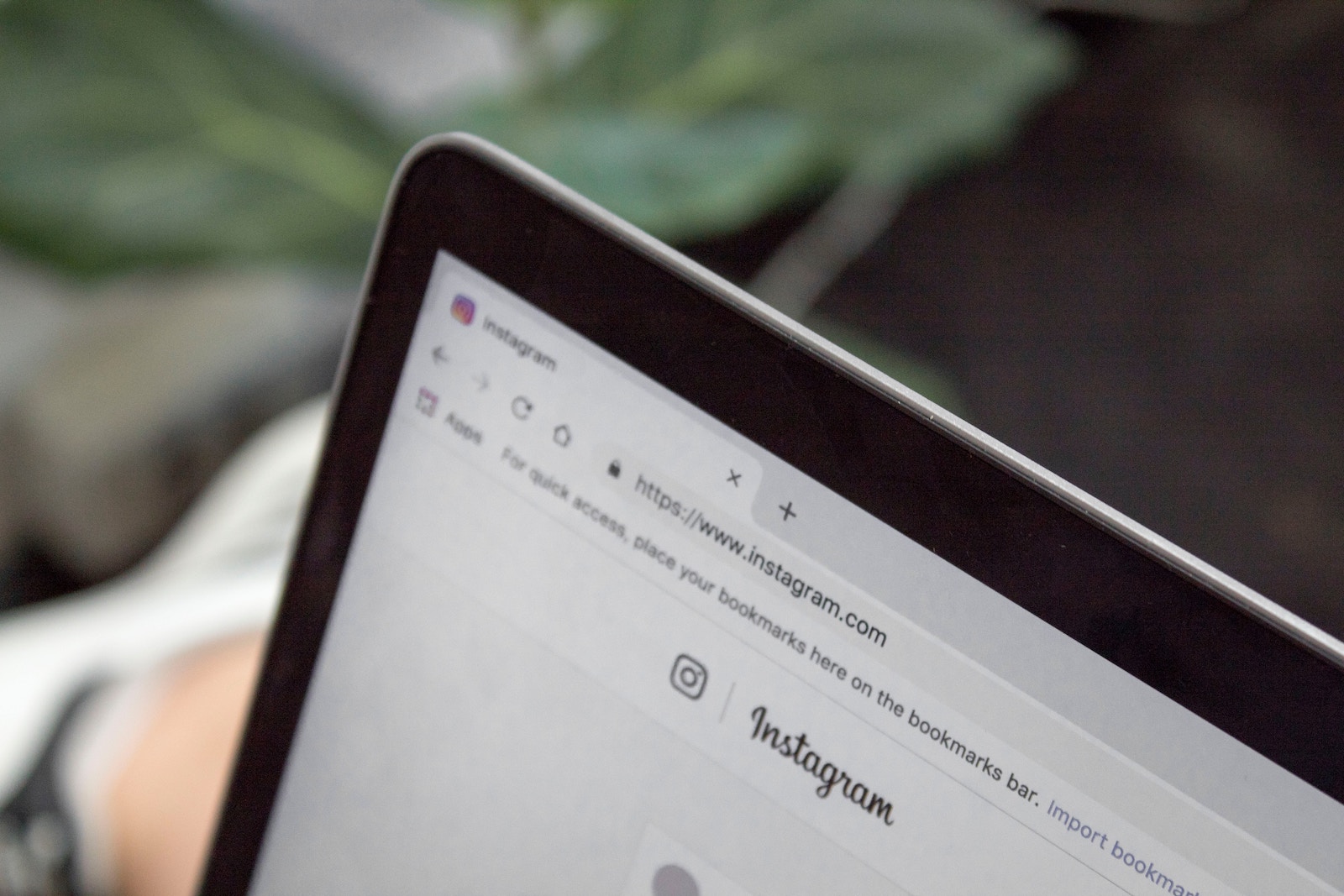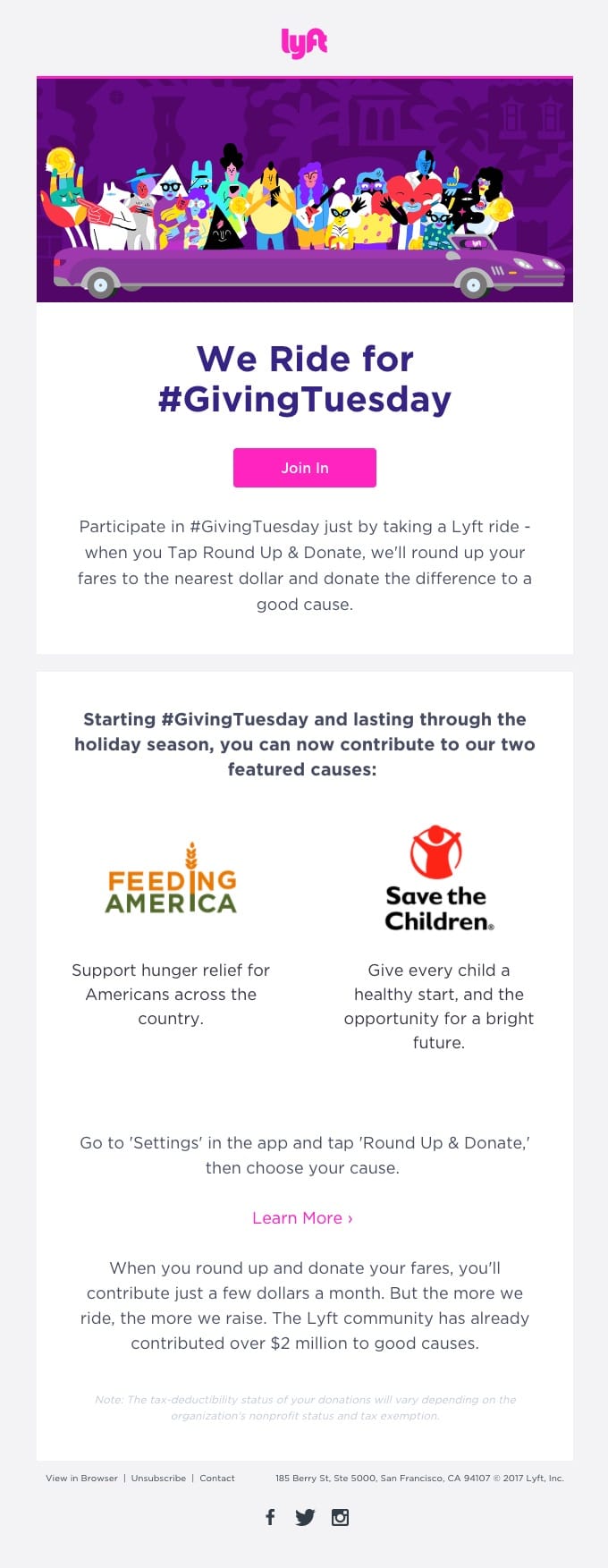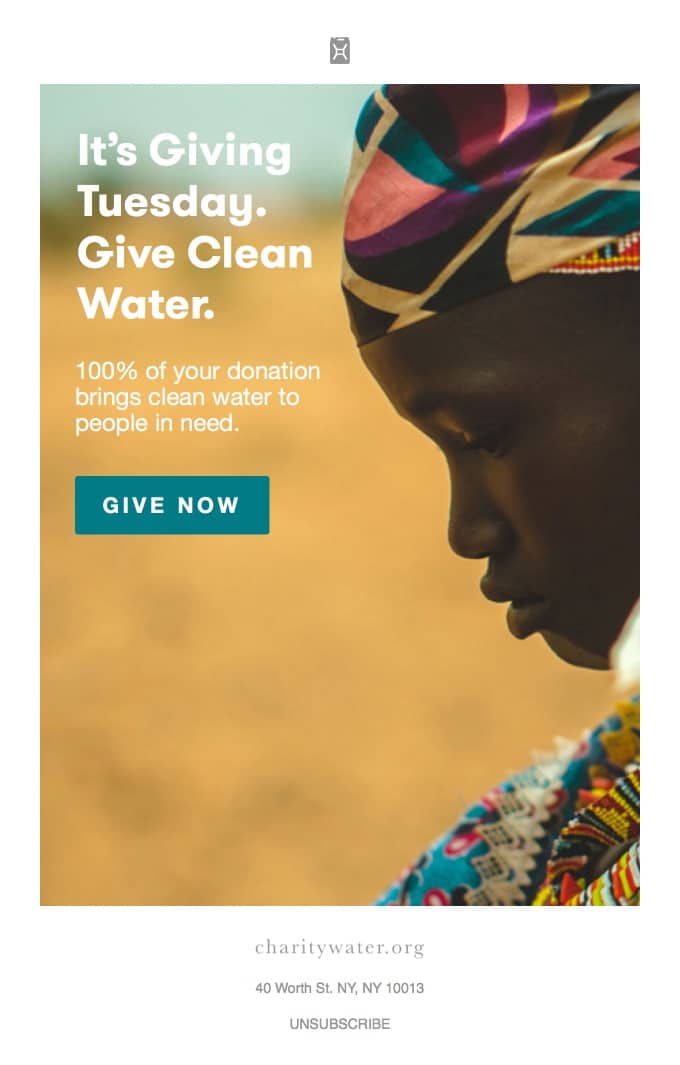As autumn begins, marketing teams and nonprofit organizations everywhere are already planning their holiday marketing campaigns.
While many retail giants will be focusing on increasing sales over the next few months, nonprofits will be busy working on their end-of-year fundraising campaigns, which include their giving Tuesday campaigns along with their general holiday and end-of-year giving campaigns.
During the months of November and December, there are quite a few essential marketing dates to remember, including:
- Thanksgiving
- Black Friday
- Small Business Saturday
- Cyber Monday
- Giving Tuesday
- Christmas Eve
- Christmas Day
- New Year’s Eve
These marketing dates are essential for all brands to keep in mind, but especially for nonprofits. Most nonprofits are much smaller than consumers think, and they don’t have the manpower behind them that larger nonprofits do when it comes to planning and setting up their giving campaigns.
So, this season, you want to get ahead of the rest and start planning your Giving Tuesday campaign well in advance of the December 3, 2019 deadline. Read on for some helpful tips to get you started.
Giving Tuesday stats worth knowing
Giving Tuesday is still considered a relatively new date on the charitable giving calendar, having been established in 2012. But thanks to advancements in technology, even small marketing teams can join in the movement.
In fact, this charitable campaign is often recognized by the hashtag #GIVINGTUESDAY across multiple social media platforms, including Twitter, Instagram, and even Facebook.
Before diving into tips on planning your next Giving Tuesday campaign, it’s essential to look at the numbers—especially if you’re still on the fence about joining the movement.
- Giving Tuesday grows by leaps and bounds every year: 2012 saw a total of $10.1 million in donations, while 2018 saw a total of $380 million.
- Only 18% of people in the U.S. are aware of Giving Tuesday, compared to 93% who are aware of Black Friday.
- In 2018, the total number of countries that participated in Giving Tuesday averaged around 150.
- There were a total of 14.2 billion social media mentions of Giving Tuesday.
17% of online donation forms are viewed on a mobile device.
3 tips for planning your Giving Tuesday campaign
When it comes time to begin planning your Giving Tuesday Campaign, your marketing team will want to stand out. However, you need to plan and test your campaigns to ensure that your audience will react well to them before you send the final versions.
Consider the following three tips for getting your Giving Tuesday email campaign going.
1. Start early and define your goals,
The earlier you can start the planning process, the better, especially if you’re working with limited staff and resources. To bring in donations, you need time to plan the campaign, as well as to bring awareness to it.
Before you start spreading awareness, you must start the planning process by carefully defining each and every goal you have for your campaign. To do this, you’ll want to follow the SMART goal-setting method. For each goal you have in mind for your Giving Tuesday campaign, you need to meet the following requirements:
- Get specific: Who’s involved? What does your nonprofit want to accomplish? Why are you participating?
- Set measurable goals: Can you track the progress of your goals? Is there a measurable outcome?
- Make them achievable: Are each of your goals reasonable enough to be accomplished (especially in your allotted time frame)?
- Make them relevant: Does it meet your nonprofit’s needs? Is it consistent with your nonprofit’s goals and mission?
- Give them a timetable: Your goal needs to have a time limit for the sake of measurability and for creating urgency with your audience.
2. Design and test your message well before sending.
Once you’ve got your goals defined and outlined, it’s time to move on to the designing phase.
This is where you’ll take the necessary time to craft your message, design your email template, and test various design aspects to create the message that will cater to your audience’s preferences.
During the design phase, you’ll want to break up your message into different pieces:
- Subject line
- Preheader text
- Body/message
- CTA
You’ll want to pay extra special attention to your subject line because that’s the very first piece of information that your audience is going to see, quickly followed by the preheader text.
This can’t be stressed enough: Don’t leave your preheader text empty. If you’re looking to reach significant goals, you need to hook your reader’s attention immediately and get them to open your message.
Learn all about preheader text here.
Consider this political fundraising email, for example. The subject line in full says, “Give me a chance to explain why tomorrow’s deadline is so important.”
Right away, readers want to know what the author has to say, especially if they’ve been following this individual throughout the campaign.
The preheader text continues to say, “We’re ready to start finalizing a few important decisions.” Again, the reader hooked because they want to know what those important decisions are.
From there, you’ll want to start composing the body of your email, which will include not only the core message, but make use of images, videos, and other design aspects to help keep the reader interested.
This means designing engaging, high-quality copywriting, as well as making use of typography and imagery to help tell your story.
Finally, you’ll want to spend some extra time crafting the perfect CTA to encourage your readers to act on your Giving Tuesday campaign and donate. When designing your call to action, you’ll want to keep these attributes in mind:
- The size
- The design
- The color
- Whitespace
Each of these will play an essential part in creating a button that’ll not only attract the reader’s attention, but will make them act.
Once you’ve finalized a few drafts, you want to take some time and run A/B tests on them so that your audience can tell you which email campaign will be most effective.

To determine the winner, campaign variation A and B will both be sent to small subsets of your email list.
The winner is determined by comparing each campaigns analytics results, and the one with better KPIs (including open rates, click-through rates, etc.) wins and will be sent out to the rest of your subscribers.
3. Send more than one message.
For those looking to run a Giving Tuesday email campaign, our final tip is to run a campaign that consists of more than one email message. While a single message can prompt action, sending a series is proven to be more effective.
Sending a series will help keep your nonprofit at the forefront of your audience’s mind, ensuring you won’t be forgotten once the big day comes. A good example of a series could look something like this:
- Campaign announcement email
- A personal story from someone your nonprofit has helped
- A letter from the head of your nonprofit
- Countdown to Giving Tuesday
- A “Today’s the Day” email
- A final hours/minute countdown email
Giving Tuesday email campaign examples
Designing the right Giving Tuesday email campaign doesn’t have to be hard. If you’re lacking in inspiration, here are four real-world examples to help get you started.
Oxford American
Using large blocks of text in an email is often frowned upon. However, everything has its time and place and, in this example from Oxford American, this wall of text works.
For their Giving Tuesday email, they decided to allow someone within the brand to reach out to the readers and explain all they accomplished over the past year.
They thank their readers for supporting them and follow that up with a CTA that simply reads, “Donate.” This CTA works really well because it stands out amongst the wall of text, as does their hyperlinked CTA that’s included within the text.
Source: Emma
Lyft
We enjoyed this Giving Tuesday email from Lyft not only because of its friendly, bright design, but because it makes it easy for the brand’s audience to get involved with their fundraising efforts.
All users have to do is take a Lyft and select “Round Up & Donate.” From there, Lyft will round up the fairs and donate the difference to their featured cause.
Source: Really Good Emails
Charity Water
Charity Water is a well-known nonprofit that sends out beautifully crafted email campaigns year-round. What made this Giving Tuesday email stand out was their use of imagery to convey emotion. By including the powerful image, the brand has little need to pack their message with text.
Source: Really Good Emails
American Red Cross
The final example by the American Red Cross stood out because of its excellent use of a personal story.
People can be hesitant to give, especially to smaller nonprofits, because they don’t always know where their money is going. By including personal stories like this, the reader can get a good look at how their money’s being used.
Source: Campaign Monitor
Wrap up
Creating a high-performing Giving Tuesday campaign doesn’t have to be difficult. If you keep the following three tips in mind, you’re sure to craft a message that’ll get you good results:
- Plan ahead and make SMART goals.
- Spend the time to A/B test your campaign before sending it out.
- Don’t rely on one-off email campaigns; send a series instead.
Need a little extra help with your nonprofit’s email marketing? Then be sure to check out our Ultimate Guide to Email Marketing for Nonprofits today.









